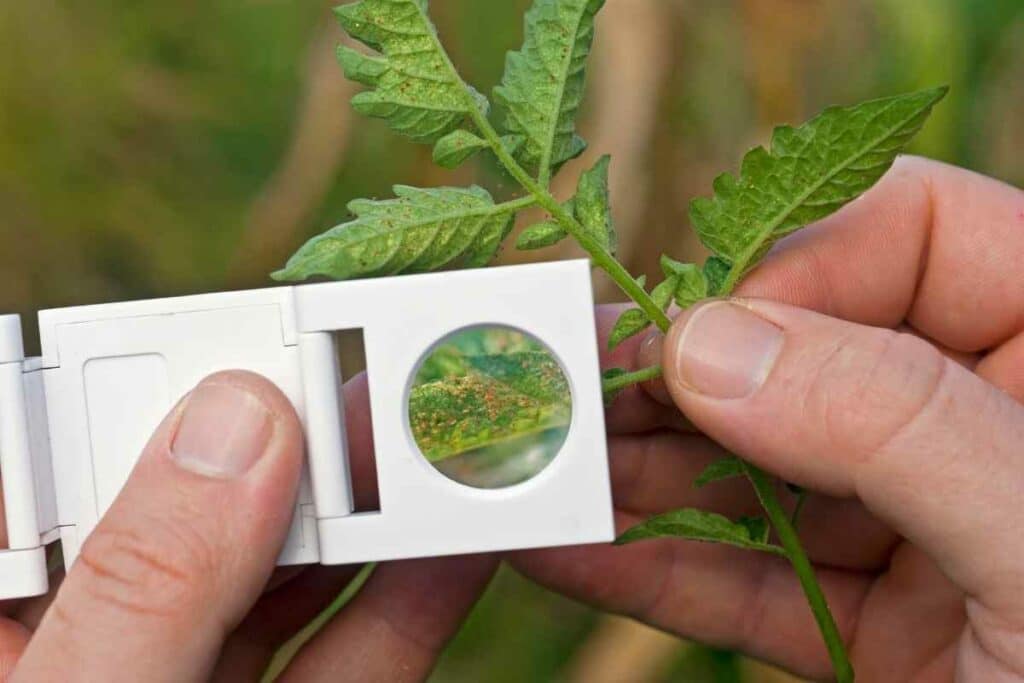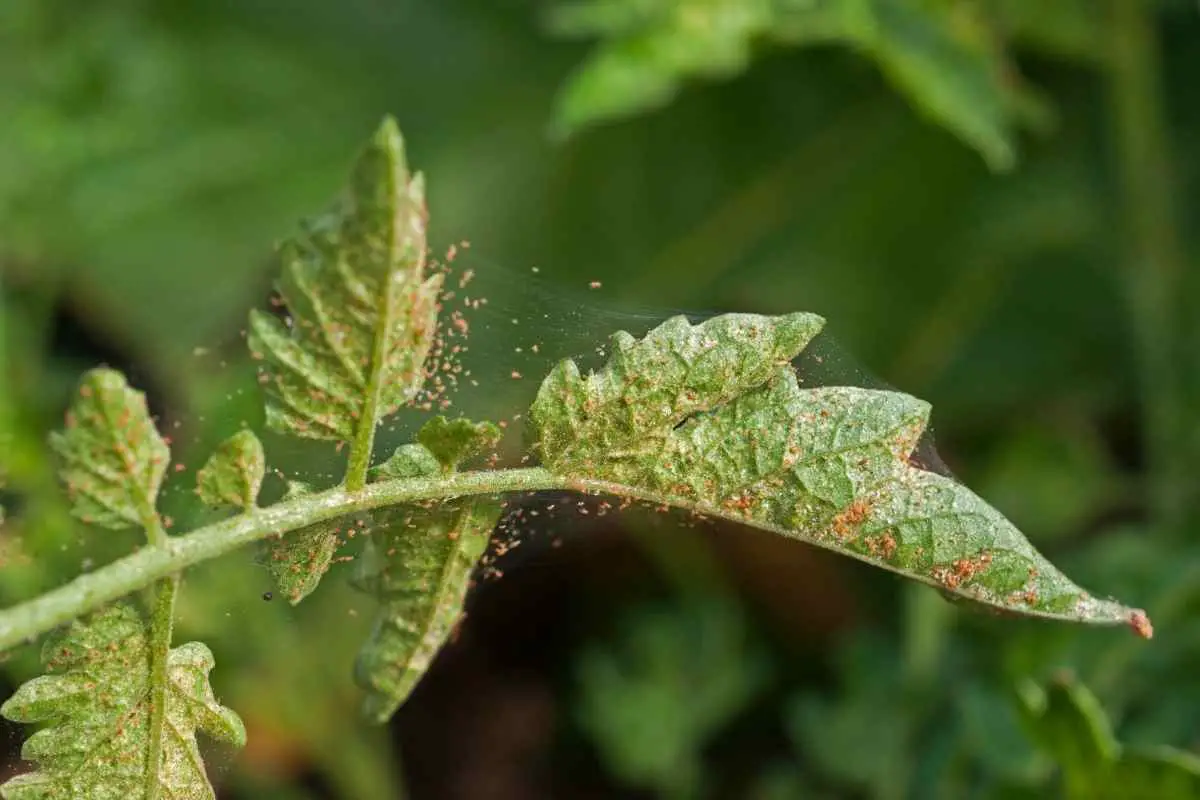If you are tackling an infestation of spider mites in your garden or on your buds or plants, you may wonder if these industrious little critters will spread to you!
Spider mites are a large family of tiny sap-sucking arachnids that make their home on a variety of plant species. Though they are in effect little spiders, they do not live in any proximity to humans. Their mouthparts and digestive system are for sucking sap so they will not bite humans either. They are specifically adapted to living on and feeding off plants, which can make them a pest.
In This Article: We’ll take a closer look at the spider mite and equip you with some effective strategies for eradicating it from your plants.
What Are Spider Mites?
If you are a diligent vegetable or greenhouse gardener, you may have already battled a variety of sap-sucking fiends that will infest and overwhelm healthy plants if given the liberty to do so.

Spider mites are another type of sap-sucker and along with mealybugs and scale insects, multiply on plants while feeding on their juices.
As mentioned above, the spider mite is not an insect but a member of the arachnid family. They are incredibly diverse with over a thousand individual species.
They are all tiny, less than 1 millimetre in size and actively spin silk webs to house themselves and their eggs on the underside of the leaves of plants.
Spider Mites Are 100% Adapted to Living on Plants so They Cannot Survive on Human Skin
The word “mites” conjures up thoughts of itching, bites and human infestation, but spider mites can only survive on plants.
They seek warm dry conditions where they can build up their population quickly.
Female spider mites will lay 20 eggs each day of their two to four-week life span feeding of the plants they inhabit with multiple punctures that comprise plant vigour and health.
As Voracious Feeders and Breeders, Spider Mites Can Quickly Overwhelm an Otherwise Healthy Plant
Tetranychus urticae, the red spider mite is one of the more common spider mite species.
It is polyphagous, meaning it is happy to feed on just about any plant available to it.
This makes it a fearsome pest with this mite industrially feeding off fruits and vegetable plants including potatoes, tomatoes, and maize, as well as ornamentals including roses.
The Bite of a Spider Mite Can Be Deadly… to Plants
The damage it inflicts to plants is systematic with each mite feeding off the plant juices individual cell by individual cell with catastrophic results.
The piercing-sucking mouthparts of the spider mite easily penetrate the plant cell wall so it can avail itself of the nutrient and sugar-rich cytoplasm of the plant cell.
They literally suck the plant cell dry leaving a silver scar on the leaf.
The Process: Though each lesion from the biting mouthparts of the spider mite is small, the cumulative effect of thousands of simultaneously feeding spider mites will wipe out the photosynthetic capability of the plant and kill it.
Symptoms of a Spider-mite Infestation
Spider mite presence and damage are often only picked up on plants once an infestation is well underway.
Check susceptible plants for these mites and other plant pests regularly from spring onwards.
Here are some of the plant symptoms and signs that should have you considering that you have spider mites:
- Loss of plant vigour: though this is non-specific, a loss in the growth velocity and vitality of your plants should always get you thinking about whether pests are at work on it.
- Loss of plant height: a weakened plant that is losing its nutrients to parasites will lose height. This should always warrant a closer examination of the plant for pests.
- Leaf drop: the leaves that are damaged from feeding will dry up and fall off an affected plant.
- Fine mottling on the upper leaf surface: the feeding of the spider mite leaves scarring of individual cells that may appear as tiny pale or white marks.
- Visible mites and eggshells: are often observed on the underside of the plant leaves. Mites can vary in colour from yellowish to green with dark spots depending on the specific species present. You will need a magnifying glass to see the mites properly.
- Silky webbing all over the plants: the silky webs that the spider mites spin to hold their eggs are also observable, especially on the underside of the leaves.
Tackling a Spider Mite Infestation
Act quickly to control a spider mite infestation by treating affected plants.
There are a variety of non-pesticide options that you can use to eradicate these pests.
Some of the control methods differ from those used to tackle mealybugs and scale insects, but the principles are the same.
Here are the key options.
Unleash Natural Predators of the Spider Mite
Thankfully spider mites have several predators that will make quick work of them, taking the pressure off your plants.
They are so effective that these biological controls are preferred to pesticides and are now used as a first-line intervention for a spider mite infestation:
- Phytoseiulus persimilis is a similarly sized mite that hunts and eats the red spider mite. It is highly active and will search your plant for spider mites at all life stages, including eggs!
- Amblyseius mites are also predators of the spider mite and will hunt and kill them all year round.
- The predatory midge Feltiella acarisuga has predatory larvae that will eat spider mites and other sap-sucking plant pests. It usually is most active in the spring as infestations are getting underway.
- The rove beetle Atheta coriaria will also target spider mites alongside its diets of gnats and thrips.
Topical Applications and Sprays to Eradicate Spider Mites
Neem oil, pyrethrum, and fatty acids can be applied to plants as sprays that deter or kill spider mites.
Surfactant sprays will prevent the mites from colonising treated plants.
Taking preventative steps can make all the difference in keeping spider mites at bay:
- Raise the humidity: an increase in a greenhouse or home humidity will not eradicate spider mites but can help make the environment inhospitable for them.
- Remove affected plants: strict quarantining is essential to prevent spider mites from spreading to other healthy plants. Also, consider quarantining new plants before bringing them into your greenhouse or home.
- Prevent overwintering: You can target overwintering spider mites by removing plant debris, stakes and dead leaves well ahead of spring. Treat your greenhouse with a glasshouse disinfectant to ensure it remains safe for your plants.
Rounding Up
It’s clear that the only problem that spider mites cause for humans is the infestation of their plants!
However, by remaining vigilant and tackling infestations early, the spider mite should not be a major problem for most gardeners.
You May Also Read
- Can You Drown Aphids? (Get Rid of Them from Your Backyard)
- Where Do Tomato Hornworms Come From?
- Do Grasshoppers Bite? Are They Dangerous?
